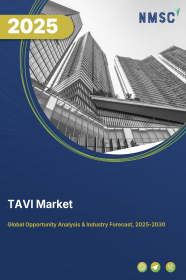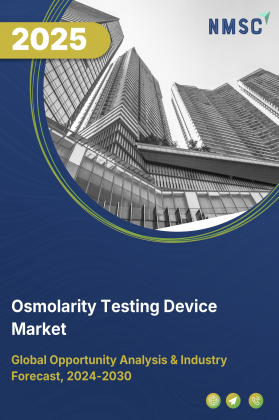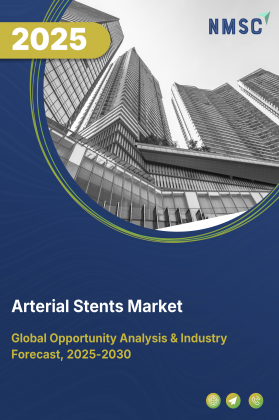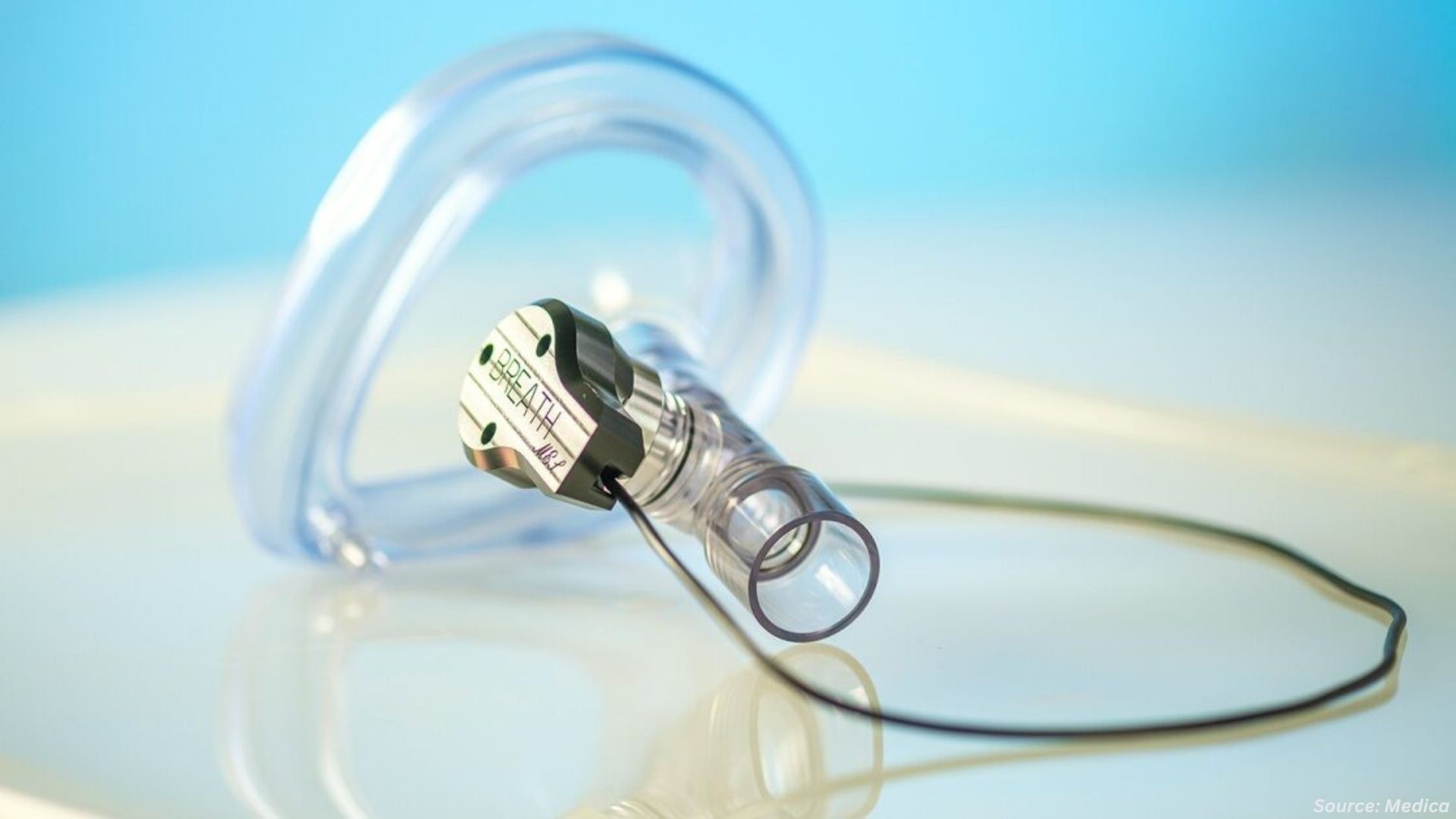
Transcatheter Aortic Valve Implantation (TAVI) Market by Product Type (Balloon-Expandable Valves, Self-Expanding Valves, Mechanically-Expanded Valves), by Procedure (Transfemoral Implantation, Transapical Implantation, Transaortic Implantation), by Patient Group (High-Risk Patients, Intermediate-Risk Patients, Low-Risk Patients), by End User (Hospitals, Cardiac Catheterization Laboratories, Ambulatory Surgical Centers) – Global Opportunity Analysis and Industry Forecast – 2025 – 2030
Industry: Healthcare | Publish Date: 24-Jun-2025 | No of Pages: 196 | No. of Tables: 283 | No. of Figures: 228 | Format: PDF | Report Code : HC226
Transcatheter Aortic Valve Implantation Market Overview
The global Transcatheter Aortic Valve Implantation Market size is estimated at USD 7.01 billion in 2024 and is predicted to reach USD 12.41 billion by 2030 with a CAGR of 10.1% from 2025-2030.
The factors such as the increase in healthcare spending, rise in CVD death rates, and growing aging population drives the market growth. However, the high procedure costs pose significant challenges to market expansion. On the contrary, adoption of robotic technology offers promising future opportunities to reduce procedural errors and improve patient outcomes. Moreover, the top players such as Abbott laboratories, Meril Life Sciences Pvt. Ltd., and others are taking various initiates like product launches in order to enhance their market expansion.
These initiatives are expected to enhance patient safety and treatment efficacy. With innovations, the market is witnessing advancements in minimally invasive procedures, improved medical designs, and enhanced medical imaging technologies. As the industry continues to evolve, a focus on patient centric care and technological integration is expected to drive sustained market growth.
Increase in Healthcare Expenditure Worldwide Boost the Market Growth
The escalating amount of healthcare funding serves as the prime factor behind the expansion of the TAVI market. Healthcare budgets expansion creates extra funding that allows physicians to implement transcatheter aortic valve implantation which offers advantages through shorter recovery time along with decreased complications compared to conventional surgical procedures.
As per 2024 report of the World Health Organization, the global health expenditure accounted to 9.8% of GDP in 2019 and it rose to 10.4% of GDP in 2021. This rise in funding leads to greater adoption of TAVI, particularly among elderly patients with aortic valve disease.
Rising Death Rates Due to CVD Drives the Market Growth
The growing death numbers from cardiovascular diseases create rising demand for TAVI because patients need better treatment approaches to meet this medical emergency. The market is expanding as it delivers less invasive surgical benefits compared to open-heart procedures for high-risk patients undergoing surgery.
According to the World Heart Federation's 2023 report, throughout the globe cardiovascular diseases impact around 500 million patients causing the reported death toll in 2021 to reach twenty million people. The TAVI market continues to grow because cardiovascular disease prevalence rises alongside the valuable benefits it delivers regarding fast recovery times and reduced complications rates.
Growing Aging Population Worldwide Fuels the Growth of the Market
The growing aging population worldwide is one of the main drivers of the transcatheter aortic valve implantation market demand. As people age their probability of obtaining aortic stenosis becomes higher since the condition leads to severe cardiovascular problems.
This creates demand for minimally invasive procedures like TAVI at a fast rate due to their safer and more effective alternative approach. The World Population Prospects report states that the global population aged 65 reached to 10% in 2022 and will rise to 16% in 2050.
High Cost Associated with TAVI Restricts the Market Growth
The high procedure costs and the need for specialized equipment and expertise limit its accessibility particularly in low-and middle-income countries which hinders the transcatheter aortic valve implantation market growth.
Incorporation of Robotic Technology Creates Future Opportunities
Incorporation of robotic technology in TAVI procedures is expected to greatly drive market growth in near future by increasing accuracy, reducing complications, and enhancing patient results. Robotic systems enhance precision in valve positioning and catheter handling, resulting in reduced procedural mistakes and improved overall success rates.
For example, in May 2024, CaranX Medical carried out the first global robotic transcatheter aortic valve implantation procedure. With such ongoing advancements in these technologies, TAVI procedures are anticipated to become more accessible and efficient.
Market Segmentation and Scope of Study
The global transcatheter aortic valve implantation market report is segmented on the basis of product type, procedure, patient group, end-user, and region. Based on product type, the market is classified into balloon-expandable valves, self-expanding valves and mechanically-expanded valves. Based on procedure, the market is segmented into transfemoral implantation, transapical implantation, transaortic implantation. On the basis of patient group, the market is classified into high-risk patients, intermediate-risk patients and low-risk patients. On the basis of end user, the market is categorized into hospitals, cardiac catheterization laboratories and ambulatory surgical centers. geographical breakdown and analysis of each of the aforesaid classifications include regions comprising North America, Europe, Asia-Pacific, and RoW.
Geographical Analysis
North America dominates the transcatheter aortic valve implantation market share and is expected to maintain its dominance during the forecast period ahead. Healthcare expenses in the U.S. and Canada continue to increase thereby strengthening the demand for advanced cardiovascular therapies.
The U.S. Centers for Medicare & Medicaid Services states that, healthcare expenditures reached USD 4.9 trillion during 2023 or USD 14,570 per person while the sector experienced a 7.5% increase throughout this year. Higher healthcare costs enable institutional investment in TAVI procedures which raises medical care quality and expands treatment choices for patients with aortic stenosis disease.
Moreover, rising number of heart failure patients drive medical organizations to invest in transcatheter aortic valve implantation technology to achieve better blood flow and prevent secondary complications throughout this area. This increase in number of patients propels healthcare providers to invest in TAVI technology which drives market growth. As per the Public Health Agency of Canada, heart failure crude incidence rate increased from 573 per 100,000 people in 2021-2022 to 601 per 100,000 people in 2022-2023.
On the other-hand, Asia-Pacific is expected to show a steady rise in the market driven by the region's rapidly aging population. As the elderly population increases, there is a higher prevalence of cardiovascular conditions, leading to a greater demand for TAVI as a treatment option.
As per the latest report published by the World Bank Group, China’s aging population over 65 accounted for 201 million in 2023 compared to 152 million in 2017, showing a growth of 32.2% within 6 years. This demographic shift is prompting healthcare providers to invest in advanced medical technologies to address the growing healthcare needs, thereby fueling the transcatheter aortic valve implantation market expansion.
Also, health care tourism acts as an expansion driver for the TAVI market because patients choose to get their treatment at foreign locations where they find high-quality health care at reasonable prices.
Advanced healthcare facilities within certain countries are successfully attracting international patients who choose TAVI instead of conventional surgery because of its cost-efficient nature. The India Brand Equity Foundation indicates the medical tourism market reached USD 7.69 billion in 2024 and projects a value of USD 14.31 billion by 2029. This trend boost the demand for TAVI treatments, particularly in regions known for medical tourism.
Competitive Landscape
Transcatheter aortic valve implantation industry comprises of several key market players such as Abbott Laboratories, Meril Life Sciences Pvt. Ltd., Boston Scientific Corporation, Edwards Lifesciences Corporation, Medtronic Plc, Venus Medtech Inc., MicroPort Scientific Corporation, Peijia Medical Technology Co., Ltd., JenaValve Technology, Inc., Anteris Technologies, Colibri Heart Valve LLC, Thubrikar Aortic Valve, Inc., Lepu Medical Technology Co., Ltd., New Valve Technology (NVT) GmbH, Shanghai NewMed Medical Co., Ltd., and others. These market players are adopting various strategies including product launch to maintain their dominance in the industry.
For instance, In November 2024, Abbott Laboratories initiated first-in-human procedures using its software-guided, balloon-expandable TAVI system, marking a milestone toward AI-enabled valve implantation.
Furthermore, in November 2024, Meril Life Sciences Pvt Ltd. launched its next generation transcatheter heart valve for better operator control enabling more precise positioning and improved predictability during implantation procedures.
Key Benefits
-
The report provides quantitative analysis and estimations of the transcatheter aortic valve implantation market from 2025 to 2030, which assists in identifying the prevailing industry opportunities.
-
The study comprises a deep-dive analysis of the current and future transcatheter aortic valve implantation market trends to depict prevalent investment pockets in the industry.
-
Information related to key drivers, restraints, and opportunities and their impact on the transcatheter aortic valve implantation industry is provided in the report.
-
Competitive analysis of the key players, along with their market share is provided in the report.
-
SWOT analysis and Porters Five Forces model is elaborated on the study.
-
Value chain analysis in the market study provides a clear picture of roles of stakeholders.
Transcatheter Aortic Valve Implantation Market Key Segments
By Product Type
-
Balloon-Expandable Valves
-
Self-Expanding Valves
-
Mechanically-Expanded Valves
By Procedure
-
Transfemoral Implantation
-
Transapical Implantation
-
Transaortic Implantation
By Patient Group
-
High-Risk Patients
-
Intermediate-Risk Patients
-
Low-Risk Patients
By End User
-
Hospitals
-
Cardiac Catheterization Laboratories
-
Ambulatory Surgical Centers
By Region
-
North America
-
The U.S.
-
Canada
-
Mexico
-
-
Europe
-
The UK
-
Germany
-
France
-
Italy
-
Spain
-
Denmark
-
Netherlands
-
Finland
-
Sweden
-
Norway
-
Russia
-
Rest of Europe
-
-
Asia-Pacific
-
China
-
Japan
-
India
-
South Korea
-
Australia
-
Indonesia
-
Singapore
-
Taiwan
-
Thailand
-
Rest of Asia-Pacific
-
-
RoW
-
Latin America
-
Middle East
-
Africa
-
Key Players
-
Abbott Laboratories
-
Meril Life Sciences Pvt. Ltd.
-
Boston Scientific Corporation
-
Edwards Lifesciences Corporation
-
Medtronic Plc
-
Venus Medtech Inc.
-
MicroPort Scientific Corporation
-
Peijia Medical Technology Co., Ltd.
-
JenaValve Technology, Inc.
-
Anteris Technologies
-
Colibri Heart Valve LLC
-
Thubrikar Aortic Valve, Inc.
-
Lepu Medical Technology Co., Ltd.
-
New Valve Technology (NVT) GmbH
-
Shanghai NewMed Medical Co., Ltd.
REPORT SCOPE AND SEGMENTATION:
|
Parameters |
Details |
|
Market Size in 2024 |
USD 7.01 Billion |
|
Revenue Forecast in 2030 |
USD 12.41 Billion |
|
Growth Rate |
CAGR of 10.1% from 2025 to 2030 |
|
Analysis Period |
2024–2030 |
|
Base Year Considered |
2024 |
|
Forecast Period |
2025–2030 |
|
Market Size Estimation |
Billion (USD) |
|
Growth Factors |
|
|
Countries Covered |
28 |
|
Companies Profiled |
15 |
|
Market Share |
Available for 10 companies |
|
Customization Scope |
Free customization (equivalent up to 80 working hours of analysts) after purchase. Addition or alteration to country, regional, and segment scope. |
|
Pricing and Purchase Options |
Avail customized purchase options to meet your exact research needs. |




















 Speak to Our Analyst
Speak to Our Analyst

























